A Static Film About Transience (and Self-Involvement, and Blowjobs)
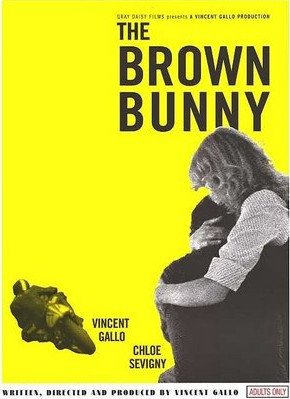 The Brown Bunny gave Roger Ebert cancer, and it features a real blowjob. And the girlfriend is dead. In 18 words, I’ve summarized the hullabaloo surrounding (and the post-climactic revelation of) Vincent Gallo’s shockingly vain vanity project from 2003. I can even spare you from the “boring” parts of the movie – basically the first 80 of its 93 minutes – and help you indulge whatever prurient curiosity you might have by pointing to an in-depth description/analysis and video of the oral-sex scene. But the film as a whole is actually oddly fascinating, especially in the context of its initial critical drubbing and the filmmaker’s reaction to that reception.
The Brown Bunny gave Roger Ebert cancer, and it features a real blowjob. And the girlfriend is dead. In 18 words, I’ve summarized the hullabaloo surrounding (and the post-climactic revelation of) Vincent Gallo’s shockingly vain vanity project from 2003. I can even spare you from the “boring” parts of the movie – basically the first 80 of its 93 minutes – and help you indulge whatever prurient curiosity you might have by pointing to an in-depth description/analysis and video of the oral-sex scene. But the film as a whole is actually oddly fascinating, especially in the context of its initial critical drubbing and the filmmaker’s reaction to that reception.

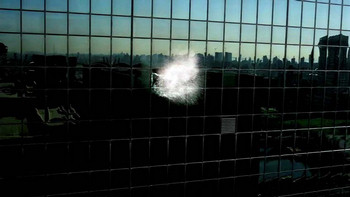 It appears that Scanners’ Jim Emerson has a renewed interest in his fantastic
It appears that Scanners’ Jim Emerson has a renewed interest in his fantastic  This commentary track deals with a handful of themes: the blunt use of color contrasted with the almost tangential way the movie deals with its ostensible theme of liberty; the use of visual and aural cues to indicate the subjective nature of the film; Julie’s progression from isolation to active engagement with the world; and the relationship between the concept of “freedom” and Kieslowski’s obvious interest in responsibility. Plus, I call Juliette Binoche a “two-faced bitch.” How can you resist?
This commentary track deals with a handful of themes: the blunt use of color contrasted with the almost tangential way the movie deals with its ostensible theme of liberty; the use of visual and aural cues to indicate the subjective nature of the film; Julie’s progression from isolation to active engagement with the world; and the relationship between the concept of “freedom” and Kieslowski’s obvious interest in responsibility. Plus, I call Juliette Binoche a “two-faced bitch.” How can you resist?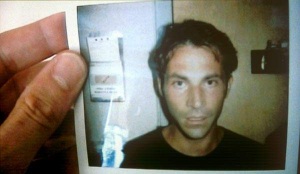 Because I do have a memory – not a very good one, but a memory nonetheless – I can save myself some work by providing Rupert Murray – the filmmaker behind Unknown White Male – with a few lessons I’ve learned from other movies and simply link to previous essays.
Because I do have a memory – not a very good one, but a memory nonetheless – I can save myself some work by providing Rupert Murray – the filmmaker behind Unknown White Male – with a few lessons I’ve learned from other movies and simply link to previous essays. Now that filmmaker Robert Altman has died, we’ll find out how prophetic his 1990 film Vincent and Theo turns out to be.
Now that filmmaker Robert Altman has died, we’ll find out how prophetic his 1990 film Vincent and Theo turns out to be. We rarely take a Faulkner sentence and examine it in isolation. We generally don’t inspect a song’s introduction, or chorus, or bridge, without even dealing with the context of the whole. We don’t study the corner of a painting, pretending that there’s nothing beyond it. Maybe we should.
We rarely take a Faulkner sentence and examine it in isolation. We generally don’t inspect a song’s introduction, or chorus, or bridge, without even dealing with the context of the whole. We don’t study the corner of a painting, pretending that there’s nothing beyond it. Maybe we should.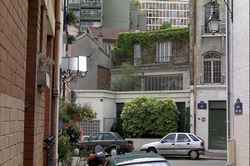 What’s unfortunate about Michael Haneke’s Caché is that the writer/director has created a movie that requires such intensive decoding at its terminals that it’s easy to overlook the rest of the movie – to, in fact, miss its entire point. By spending so much time and effort on the beginning and the ending, we neglect essential questions: What is the film trying to say? Is this an effective way to communicate that message?
What’s unfortunate about Michael Haneke’s Caché is that the writer/director has created a movie that requires such intensive decoding at its terminals that it’s easy to overlook the rest of the movie – to, in fact, miss its entire point. By spending so much time and effort on the beginning and the ending, we neglect essential questions: What is the film trying to say? Is this an effective way to communicate that message?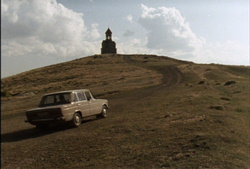 In Calendar, writer/director Atom Egoyan offers a film version of
In Calendar, writer/director Atom Egoyan offers a film version of 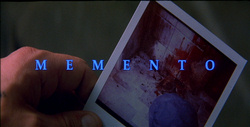 A man’s hand holds a Polaroid photograph, but who would want to commemorate such a gruesome scene? The picture shows a body lying face-down on a floor, blood everywhere. This might be a crime-scene photo, but that conclusion doesn’t feel right.
A man’s hand holds a Polaroid photograph, but who would want to commemorate such a gruesome scene? The picture shows a body lying face-down on a floor, blood everywhere. This might be a crime-scene photo, but that conclusion doesn’t feel right.